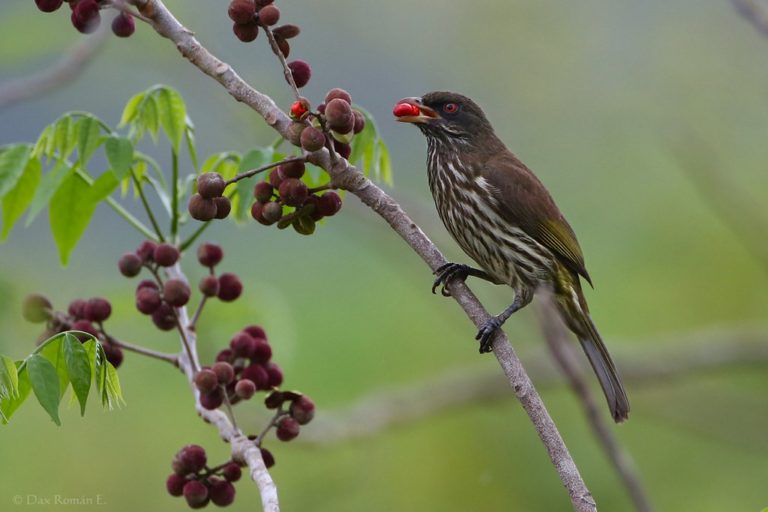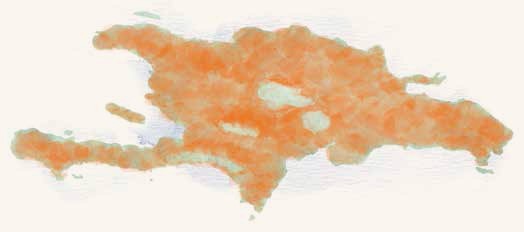Birdfinding.info ⇒ One of the commonest birds in the lowlands of Hispaniola. Readily found in Santo Domingo and other urban areas, where its large, globular nests are a familiar presence. Also easy to find around the major seaside resorts of the D.R. and in Los Haitises and Del Este National Parks. In the southwest, it is more often seen in towns such as Barahona than at the sites most frequented by birdwatchers.
Palmchat
Dulus dominicus
Endemic to Hispaniola and the adjacent islands of Gonâve and Saona.
Widespread in semiopen habitats of the lowlands. Most numerous in palm savannas, but occurs in edge habitats of most forest types. Well adapted to human development, thriving in urban landscapes and agricultural areas with scattered trees.
Nests colonially in bulky structures that house several pairs and are usually constructed on palms or utility poles.
Identification
A robust, thrush-sized bird with mostly olive-brown plumage and boldly streaked underparts. When seen clearly, its red eye and heavy yellow bill are conspicuous.
Gregarious and noisy, often in flocks of about ten to twenty that descend on fruiting or flowering trees.
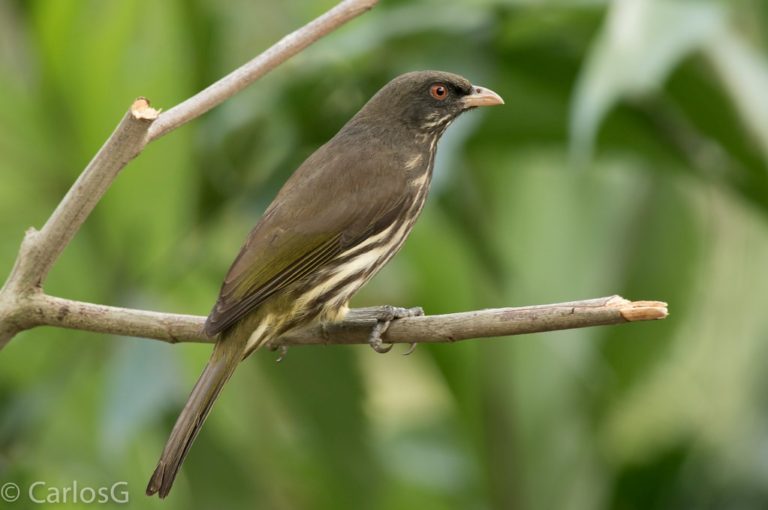
Palmchat. (Agua Dulce Ecological Reserve, Dominican Republic; February 27, 2016.) © Carlos Gomez
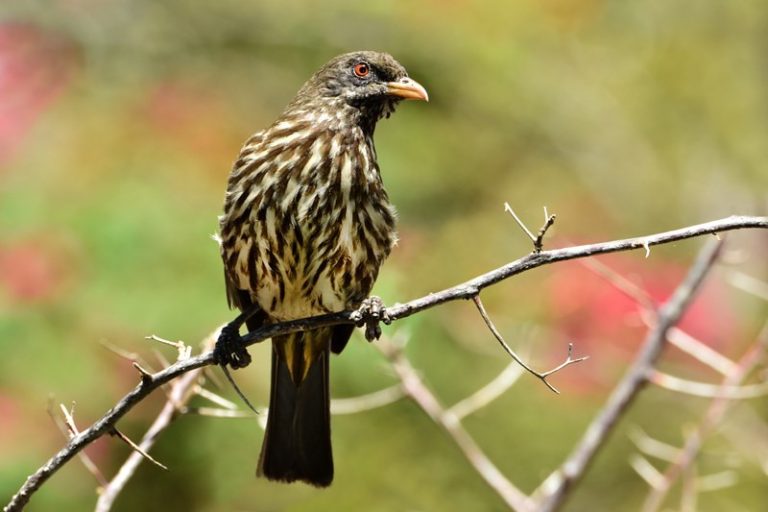
Palmchat. (Dominican Republic; May 24, 2018.) © Carlos de Soto Molinari
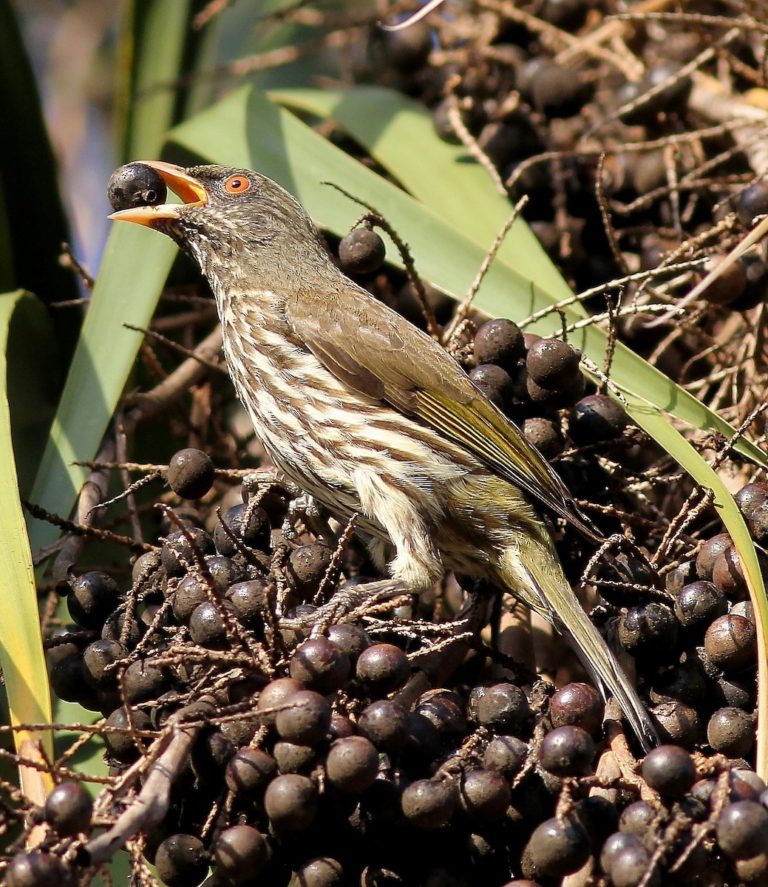
Palmchat. (National Botanical Garden, Santo Domingo, Dominican Republic; March 15, 2015.) © Jason Leifester
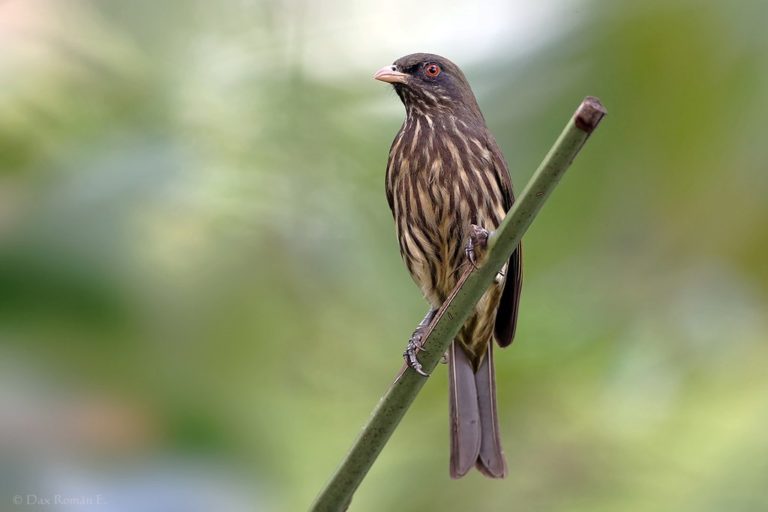
Palmchat. (Dominican Republic; February 27, 2016.) © Dax M. Román E.
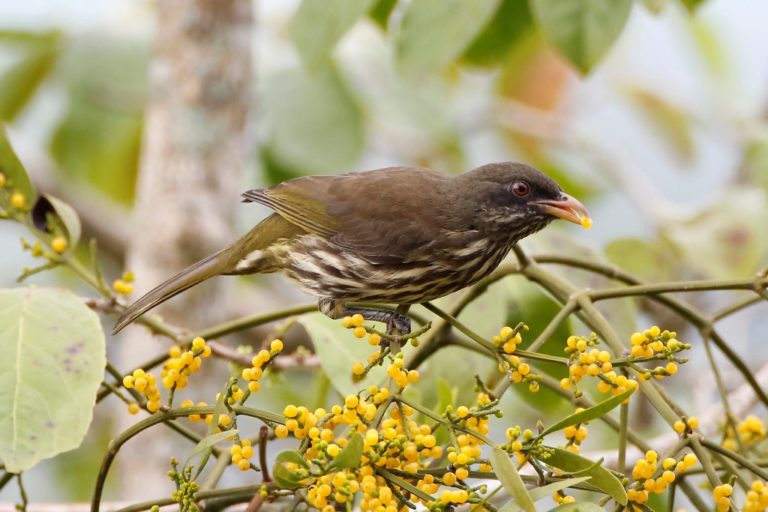
Palmchat. (Lomas Lindas, Dominican Republic; January 25, 2015.) © Dax M. Román E.
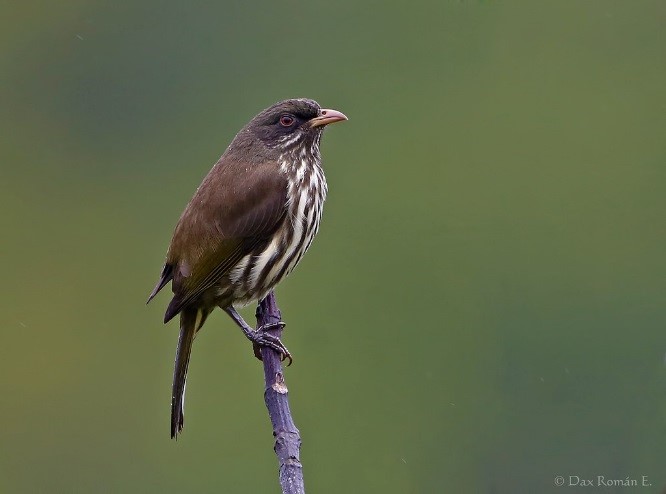
Palmchat, showing mostly brown upperparts. (Ébano Verde Scientific Reserve, Dominican Republic; February 23, 2014.) © Dax M. Román E.
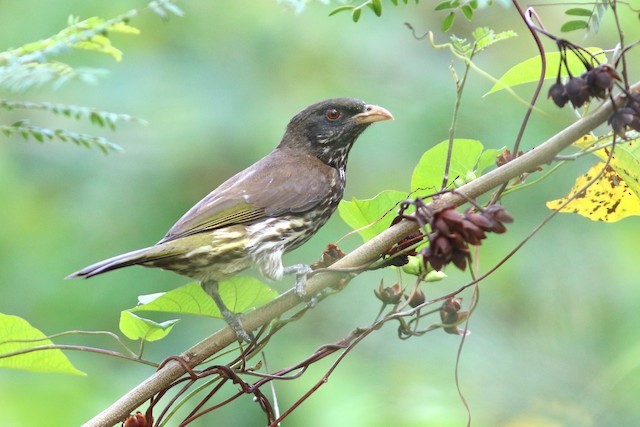
Palmchat. (Altos de Chavon, La Romana, Dominican Republic; March 11, 2015.) © John Sullivan
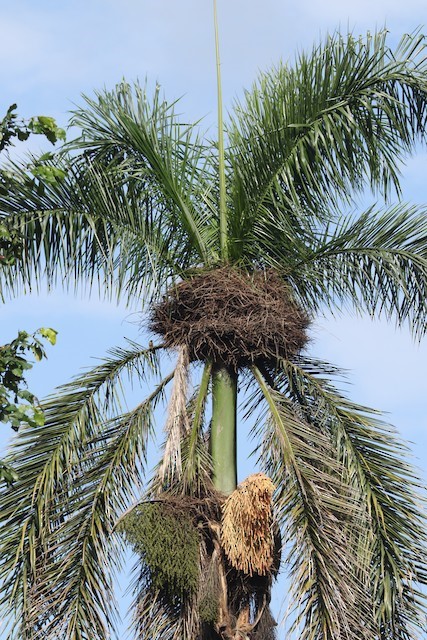
Palmchat nest on a palm. (Los Haitises National Park, Dominican Republic; February 9, 2018.) © Gil Ewing
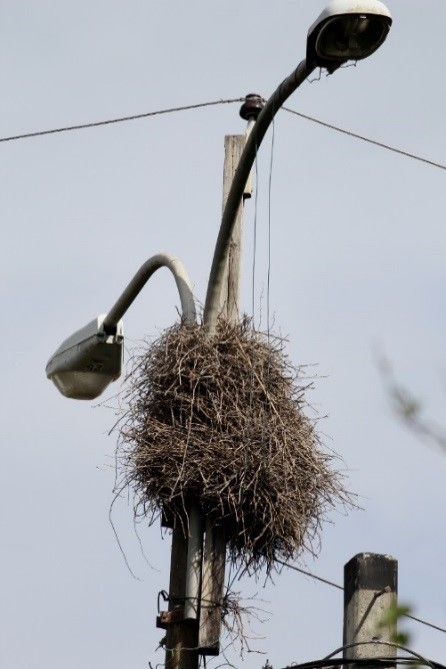
Palmchat nest on a utility pole. (Santo Domingo, Dominican Republic; March 15, 2015.) © Jason Leifester
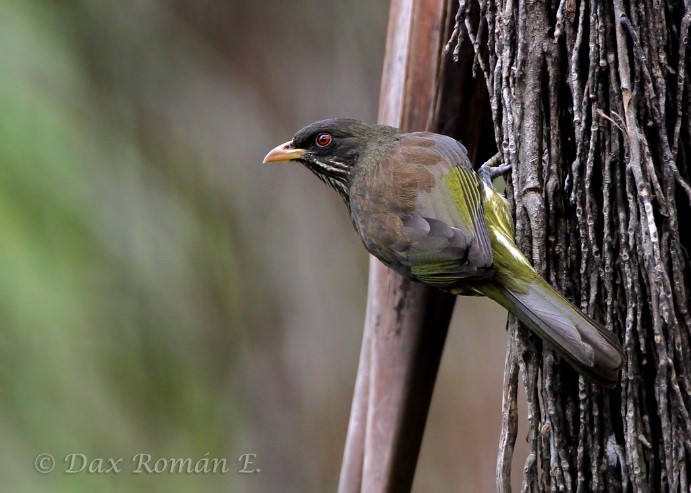
Palmchat, showing gradations of color on the upperparts. (Lomas Lindas, Dominican Republic.) © Dax M. Román E.
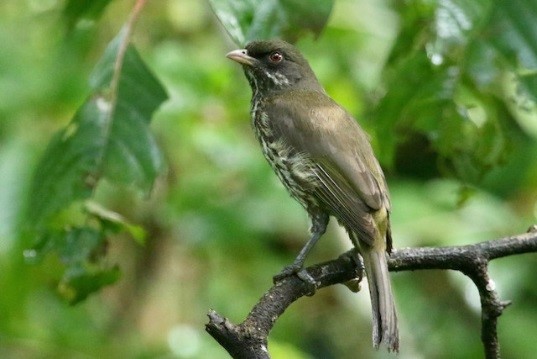
Palmchat, showing all-olive upperparts. (Los Haitises National Park, Dominican Republic; February 9, 2018.) © Gil Ewing

Palmchat. (Rabo de Gato Trail, Dominican Republic; March 10, 2014.) © Jim Tietz
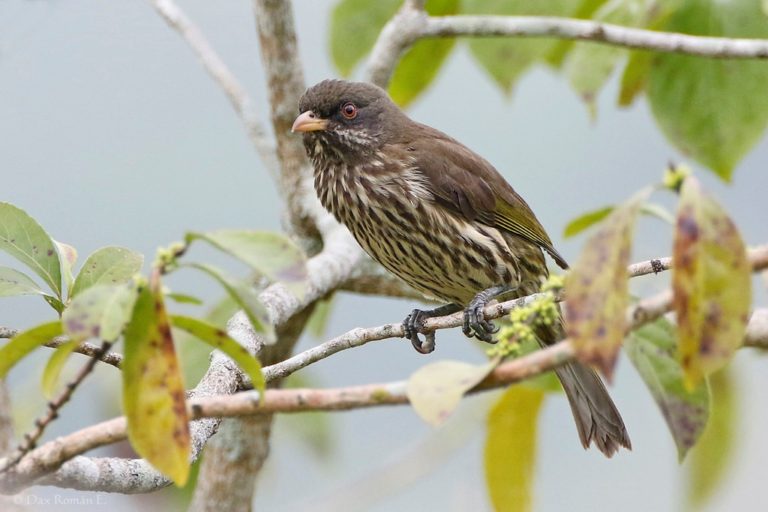
Palmchat. (Lomas Lindas, Dominican Republic; January 25, 2015.) © Dax M. Román E.
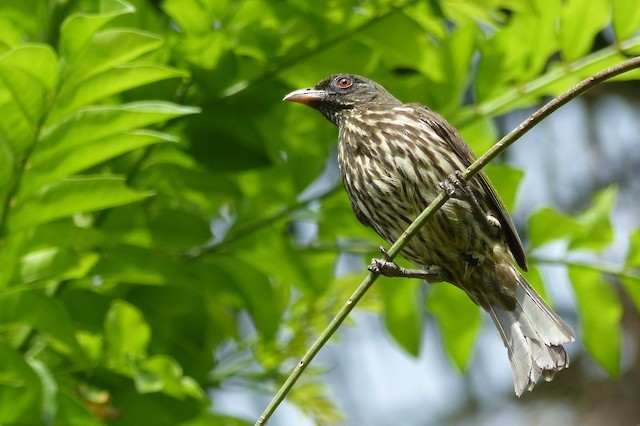
Palmchat. (Paraíso Caño Hondo, Los Haitises National Park, Dominican Republic; May 17, 2016.) © John Garrett
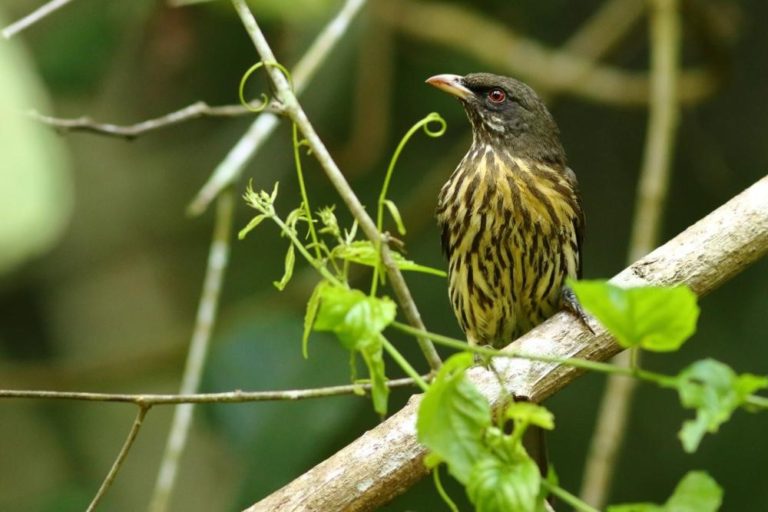
Palmchat. (Los Haitises National Park, Dominican Republic; March 16, 2016.) © Markus Lilje
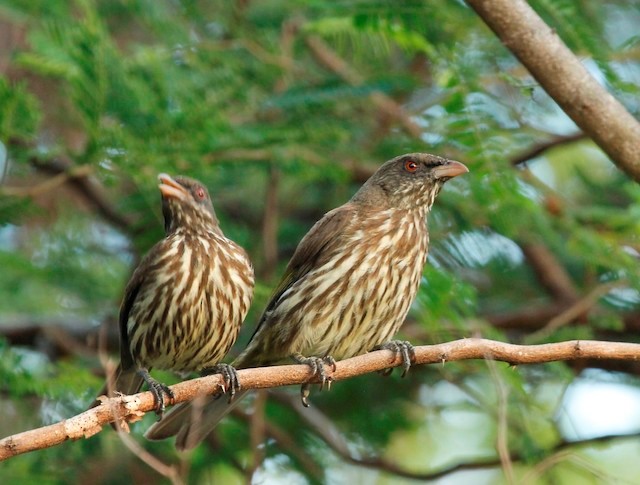
Palmchats. (Occidental Caribe, Bávaro, Dominican Republic; December 19, 2008.) © Matt Baumann
Voice. Makes a wide array of rasps, whistles, clucks, and chips: The alarm call is cheer! cheer! cheer! cheer! often followed by sush-sush-sush:
Notes
Monotypic species, genus, and family.
The Palmchat is the national bird of the Dominican Republic.
References
Alas & Colores: Palmchat (Dulus dominicus), https://alasycolores.com.do/en/aves/cigua-palmera.
Dzielski, S. 2014. Palmchat (Dulus dominicus), version 1.0. In Neotropical Birds Online (T.S. Schulenberg, ed.). Cornell Lab of Ornithology, Ithaca, N.Y. https://doi.org/10.2173/nb.palmch1.01.
Latta, S., C. Rimmer, A. Keith, J. Wiley, H. Raffaele, K. McFarland, and E. Fernandez. 2006. Birds of the Dominican Republic and Haiti. Princeton University Press, Princeton, N.J.
Raffaele, H., J. Wiley, O. Garrido, A. Keith, and J. Raffaele. 1998. A Guide to the Birds of the West Indies. Princeton University Press, Princeton, N.J.
Temple, H. 2019. Palmchat (Dulus dominicus). In Handbook of the Birds of the World Alive (J. del Hoyo, A. Elliott, J. Sargatal, D.A. Christie, and E. de Juana, eds.). Lynx Edicions, Barcelona. https://www.hbw.com/node/58086. (Accessed June 3, 2019.)
